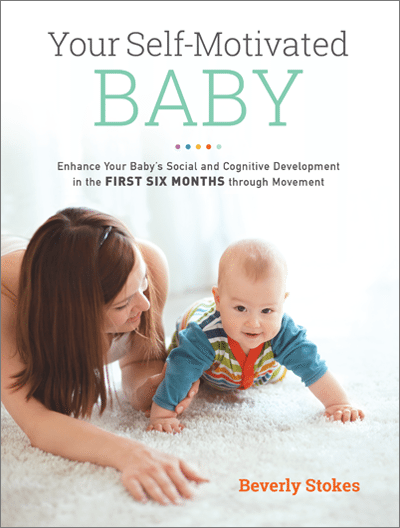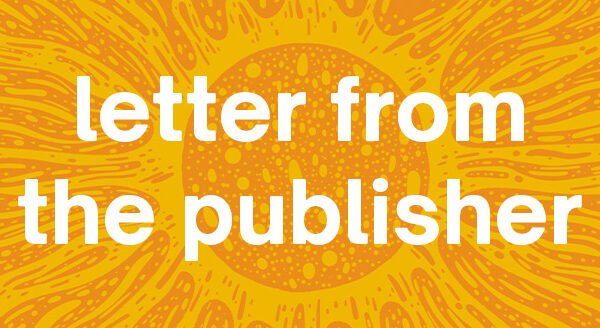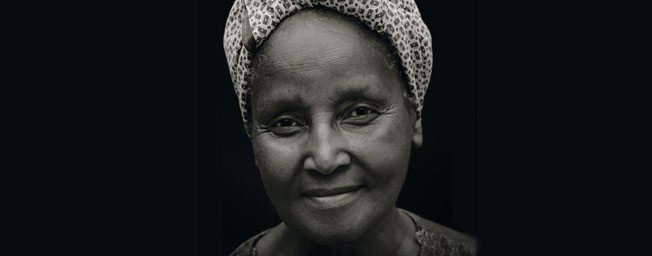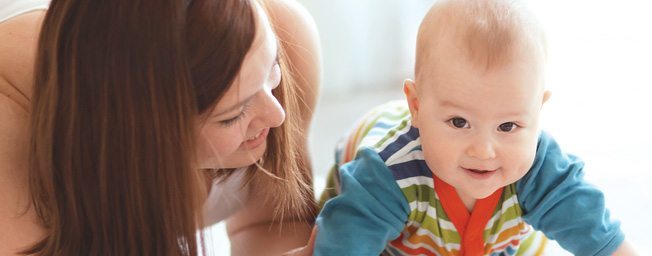
Developmental Movement in Your Baby’s First Six Months
Categories: Excerpt Health & Healing Psychology & Personal Growth
Adapted from Your Self-Motivated Baby by Beverly Stokes
Every parent wants a healthy, happy, and motivated baby—a baby eager to move, interact, and explore her world. Your Self-Motivated Baby provides you with a fresh approach to parenting based on baby movement research and natural movement development. It’s a new way to parent your baby through movement, enjoy your baby more, and enhance your baby’s social and cognitive development.
Developmental Movement in Your Baby’s First Six Months
Why is it important for parents and caregivers to understand their baby’s movement development—especially in these formative first six months? My ongoing research over the past ten years has found that babies reveal their abilities in three main areas—developmental movement, social interaction, and self-motivated learning—earlier than previously thought. This is corroborated by other major researchers in infant and child development fields. The National Scientific Council on the Developing Child at Harvard University reports that critical features of brain architecture are shaped by experience before and right after birth: different types of experience are essential at different ages for optimal brain development.
In a groundbreaking fourteen-year, large-scale longitudinal research study published in 2013, Marc Bornstein, head of child and family research at the Eunice Kennedy Schriver National Institute of Child Health and Human Development (NICHD), and his associates reported that infants they studied who were more motorically mature and who explored more actively at five months achieved higher academic levels when they were fourteen years old. Based on their analysis of the results, they concluded that an infant’s greater motor-exploratory competency enables the infant to participate in more opportunities for social interaction and creates richer involvement with their environment. This forms the foundation for the development of better cognitive functioning during childhood and higher academic achievement in adolescence.
Developmental movement focuses on the dynamic foundation for understanding how babies move. There is a general progression to a baby’s movement development. As you follow the movement organization through which your baby progresses in the first six months—first lifting her head, rolling, and belly crawling, to developing the components for independent sitting—you’ll learn to recognize the essential movement patterns that underlie these developmental milestones.
Three key achievements that underlie babies’ extraordinary transformation in the pre-locomotion stage are:
- Learning to move and interact with the force of gravity
- Exploring their body awareness and body boundaries
- Developing their body image through a sequence of movement patterns
We start our journey with an overview of selected movement systems, basic movements, and the multimodal systems.
Vestibular System
The vestibular system, which is highly developed at birth, coordinates movement throughout our whole body. The sense of balance is located in the vestibule of the inner ear. The inner ear registers our perception of where we are in relationship to the earth by the pull of gravity. Every movement the baby makes stimulates the vestibular system. From infancy on, we depend on the smooth functioning of this system for visual-movement coordination, locomotion, and balance—all of which contribute to the awareness of where we are in space.
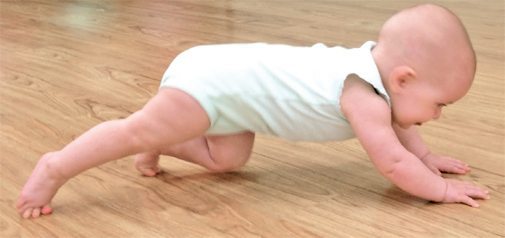
Kinesthetic System
The kinesthetic system provides us with information about our body, in particular the sense of limb position and limb movement. This kinesthetic sense provides babies with an internal body-mapping process that develops an awareness of their body, knowing where each part of their body is, and how it is moving. The close links between body movement, tactile sensations, and visual explorations are fundamental for babies in developing their body awareness. The sense of effort also contributes to the kinesthetic sense through movement force and weight sensations. Without looking at our body, we know where our limbs are.
Proprioceptive System
The proprioceptive system is considered the “body-position” sense that includes balance. Proprioception refers to the sensory input and feedback from the receptors located in the muscles, joints, ligaments, and tendons. In contrast to the kinesthetic system, proprioception has more to do with our body position and awareness of our body in space and its relationship to that space.
Vestibular, Kinesthetic, and Proprioceptive Systems
Understanding their relationship to gravity, babies can perform amazing balancing actions. Every movement a baby makes stimulates the vestibular system. The kinesthetic sense provides her with an internal knowing about where each limb is and how it is moving. The proprioceptive system provides her with an awareness of her body in space and relationship to that space.
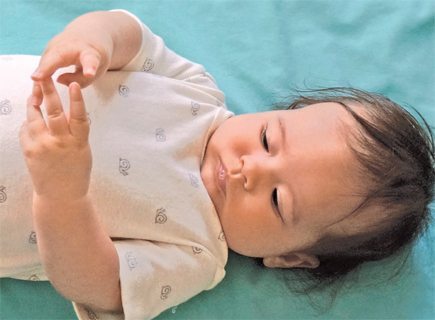
Basic Movements
Reflexes: Reflexes are automatic responses to external stimuli and establish the baby’s basic patterns of function. Goal-directed actions are more complex than reflexes, and are motivated and activated by the baby to interact socially and explore the environment.
Righting Reactions: Righting reactions enable the baby to raise and maintain her head and body against gravity in all postures, and in transitions from lying down to standing, and to turn in all positions in relationship to gravity and space. Righting reactions begin to develop at birth and remain active throughout life.
Balance Responses: Balance responses are automatic patterns of response for maintaining balance, which are triggered by shifting of the baby’s center of gravity or base of support through space. Most balance responses appear, in concert with the righting reactions, from around six months and then continue throughout life.
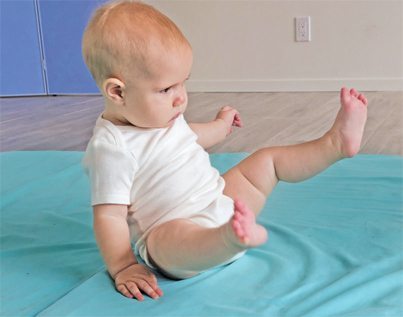
Multimodal Senses
As your baby explores and learns about the world, all his senses come into play, providing him with multimodal learning and experiences that include visual, auditory, touch, and kinesthetic stimulation. A baby’s early experiences are shaped by these multimodal stimuli and by his developing attention system. He refines his ability to shift focus to pick up information relevant for social interactions and to relate to objects in the environment.
Touch: The skin is the baby’s largest sensory organ for touch, and newborns already have a well-developed sense of touch. Babies and parents benefit from bonding through touch and by skin-to-skin contact. Touching and being touched by someone else focuses our attention on our body’s sensations. The sense of touch resulting from active exploration guides our attention to an object’s size, shape, weight, texture, and temperature to learn about the external environment. Haptic System The haptic system uses sensory information from the cutaneous inputs in the skin and the kinesthetic input receptors in muscles, tendons, and joints. It includes tactile and/or kinesthetic information used for sensing or manipulating objects in the environment. The kinesthetic system contributes to the awareness of the position and movement of the baby’s arms and legs. Haptic perception combines with other sensory modalities such as vision.
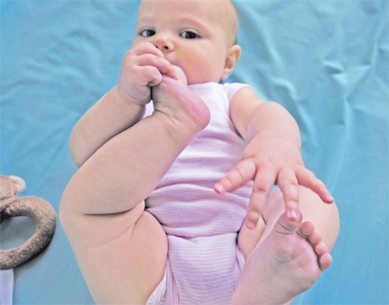 Body Awareness: The baby’s self-touch sensations and specific movements—such as hand-to-mouth, hand-to-hand, hands-to-knees and hands-to-feet movements—provide important body awareness organization. When a baby moves, she experiences ongoing kinesthetic feedback from her muscles, joints, and vestibular system. When the baby watches her arms, legs, and hands move, she receives consistent information across visual, touch, and proprioceptive systems.
Body Awareness: The baby’s self-touch sensations and specific movements—such as hand-to-mouth, hand-to-hand, hands-to-knees and hands-to-feet movements—provide important body awareness organization. When a baby moves, she experiences ongoing kinesthetic feedback from her muscles, joints, and vestibular system. When the baby watches her arms, legs, and hands move, she receives consistent information across visual, touch, and proprioceptive systems.
Mouthing: A baby’s lips and hands are exquisitely sensitive, having the largest number of touch receptors in the body. During feeding babies learn about the actions of reaching, grasping, releasing, and withdrawing from the nipple, while simultaneously learning about smell and taste. During the next few months, babies explore toys and objects by mouthing them. Through mouthing objects babies learn about specific properties such as hardness, size, shape, and texture.
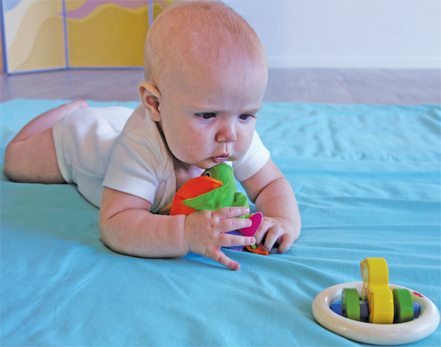 Vision: Communication in a social interaction involves coordination of gaze, vocalization, movement, and touch with an engaged social partner. Your baby’s ability to focus on your face provides a clue to the development of your baby’s visual attention and all his visual experiences contribute to his learning. Attention includes focus and explorations such as head turning and visually directed reaching.
Vision: Communication in a social interaction involves coordination of gaze, vocalization, movement, and touch with an engaged social partner. Your baby’s ability to focus on your face provides a clue to the development of your baby’s visual attention and all his visual experiences contribute to his learning. Attention includes focus and explorations such as head turning and visually directed reaching.
Hearing: At birth hearing is well developed and newborns can discriminate their mother’s voice. Your baby can identify your voice among all the sounds that make up her rich sonic environment. When you come into a room, even before seeing you, she may smile just hearing the sound of your voice. Tuning into your speech your baby may attend to the rhythm and tempo of your vocal expression—your unique way of communicating. When your baby vocalizes, she experiences the sounds she makes and feedback from shaping her mouth and articulating movements.
Adapted from Your Self-Motivated Baby by Beverly Stokes. © 2015, North Atlantic Books.
Tags: Beverly Stokes Children's Health Family & Parenting Movement Therapies
